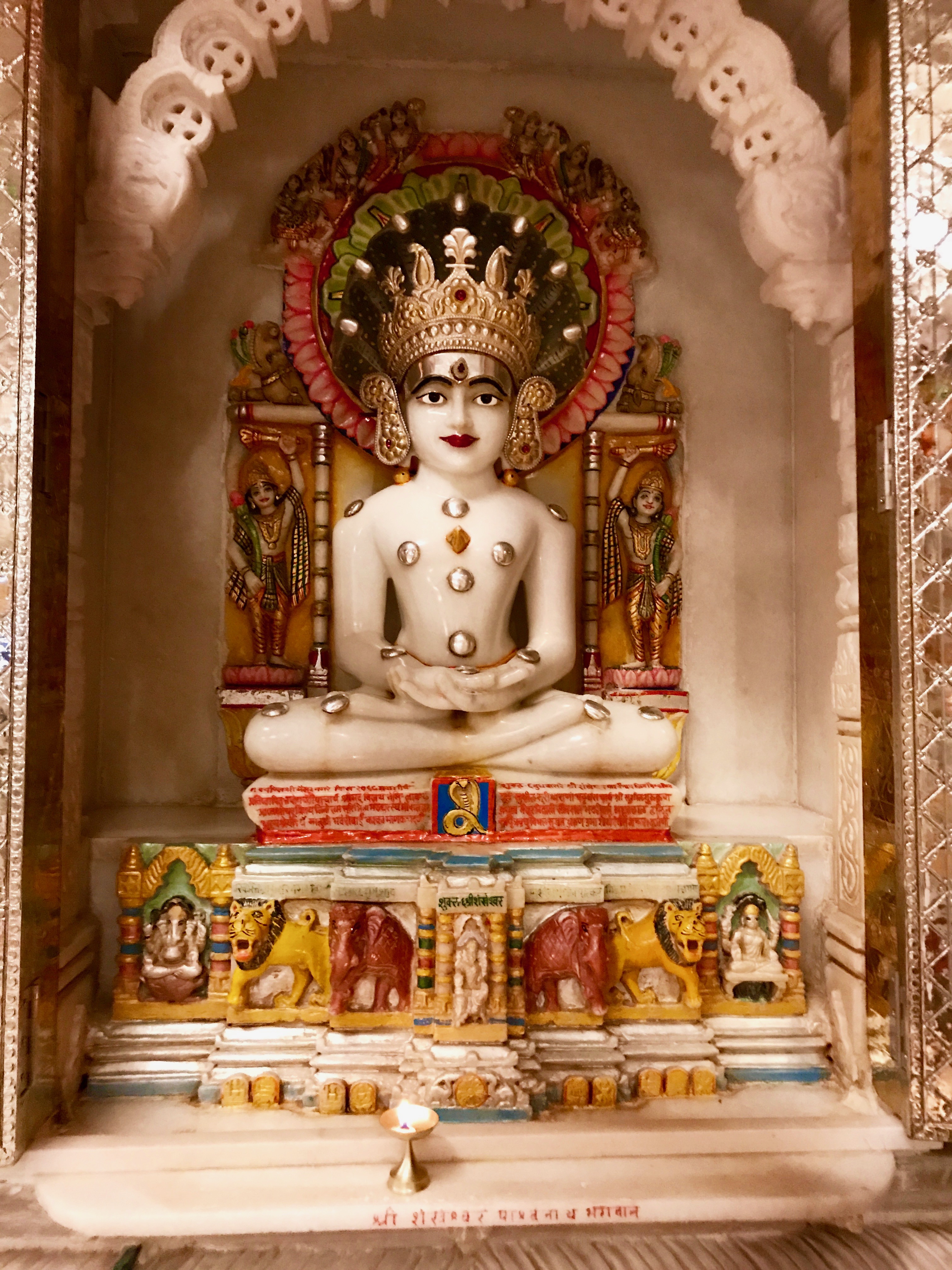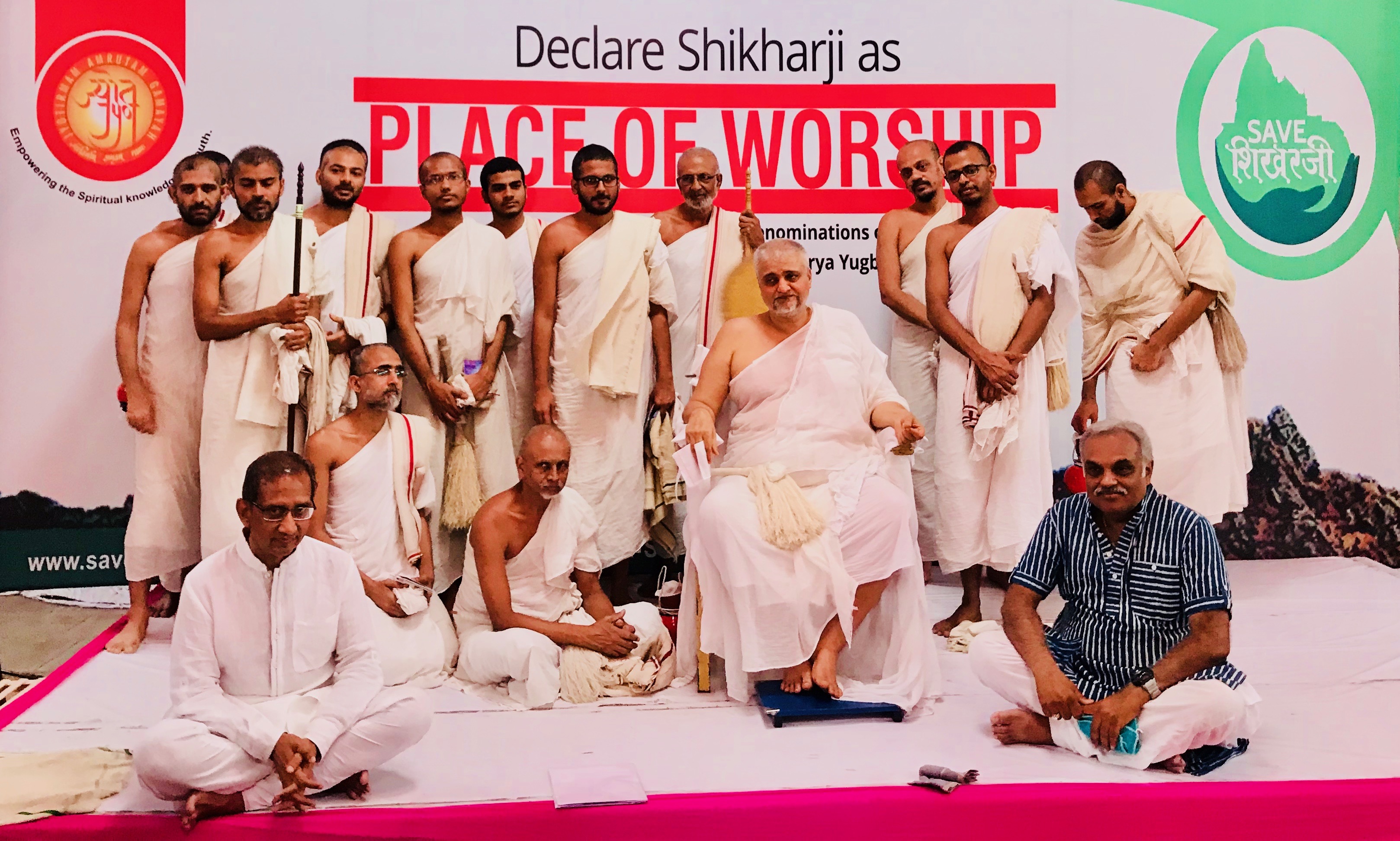|
Muni Mohjit Vijayji
Muni Mohjit Vijayji(14 October 1944 ‚Äď 2 September 2000) born as Mahendra Kumar Mota,, Jain ascetic of Swetamber tradition was a disciple of Acharya Ramchandrasuri and was initiated in monkhood on 29 April 1979 along with his younger brother Navinkumar (Renowned as Jainacharya Yugbhushan Surishwarji Yugbhushan Suri(born 26 October 1957) born as Naveen Khimji Mota is a Jain acharya of Shwetamber tradition. He holds, along with 31 other monks, the highest rank in Jaina order and as the heir of Tirthankara Mahavir Swami he is the 79th suc ...). Both brothers are widely known as 'Mota Pandit Maharaj Saheb' and ' Nana Pandit Maharaj Saheb' respectively in view of their expertise in Jain scriptures. Life Muni Mohjit Vijayji, as a spiritual leader of Swetamber Jain tradition, had contributed to the book ''That Which Is'', known as the Tattvartha Sutra to Jains. Book is recognized by all four Jaina traditions as the earliest, most authoritative and comprehensive summary of ... [...More Info...] [...Related Items...] OR: [Wikipedia] [Google] [Baidu] |
ŇövńďtńĀmbara
The ŇövńďtńĀmbara (; ''ŇõvńďtapaŠĻ≠a''; also spelled ''Shwethambara'', ''Svetambar'', ''Shvetambara'' or ''Swetambar'') is one of the two main branches of Jainism, the other being the ''Digambara''. ŇövńďtńĀmbara means "white-clad", and refers to its ascetics' practice of wearing white clothes, which sets it apart from the ''Digambara'' "sky-clad" Jains, whose ascetic practitioners go naked. ŇövńďtńĀmbaras, unlike Digambaras, do not believe that ascetics must practice nudity. The Svetambara and Digambara traditions have had historical differences ranging from their dress code, their temples and iconography, attitude towards Jain nuns, their legends and the texts they consider as important. Svetambara Jain communities are currently found mainly in Gujarat, Rajasthan and coastal regions of Maharashtra. According to Jeffery D. Long, a scholar of Hindu and Jain studies, about four-fifths of all Jains in India are Svetambaras. History Majority of the Svetambaras are ''murtipujak ... [...More Info...] [...Related Items...] OR: [Wikipedia] [Google] [Baidu] |
Ramchandrasuri
Ramchandrasuri (1896 ‚Äď 1991) was a Jain monk and scholar . Biography Ramchandrasuri was born on 3 March 1896 (Falgun Vad 4, Vikram Samvat 1952) in Padara village (now in Gujarat). He was a disciple of Acharya shri Prem Surishwarji and was initiated in monkhood by Muni Mangalvijayji at Gandhar (now in Gujarat) in 1912 (Pushya Vad 13, VS 1969). He died in 1991 (Ashadha Vad 15, VS 2047). The centenary of his initiation in asceticism was celebrated in Palitana, Ahmedabad, Mumbai and Gandhar in 2012. Order Ramchandrasuri established the Ramchandrasuri Samuday, an order of Tapa Gaccha sub-sect of Svetambara Jainism. The Gachhadhipati, head of the Samuday, Hembhushansuri died in 2008 at Delhi Delhi, officially the National Capital Territory (NCT) of Delhi, is a city and a union territory of India containing New Delhi, the capital of India. Straddling the Yamuna river, primarily its western or right bank, Delhi shares borders w .... On 29 March 2011, Punyapalsuri was app ... [...More Info...] [...Related Items...] OR: [Wikipedia] [Google] [Baidu] |
Jainacharya Yugbhushan Surishwarji
Yugbhushan Suri(born 26 October 1957) born as Naveen Khimji Mota is a Jain acharya of Shwetamber tradition. He holds, along with 31 other monks, the highest rank in Jaina order and as the heir of Tirthankara Mahavir Swami he is the 79th successor in the lineage of Ganadhara Sudharma Swami after his coronation as Gachhadhipati of Muni Mohjit Vijayji Samuday on 4 February 2020. On 21 February 2021 celebration and felicitation function was held at Mumbai upon his 1st anniversary of coronation as Spiritual Sovereign also known as Gachhadhipati amongst Jain followers. Early life He is a disciple of Acharya Ramchandrasuri and was initiated into monkhood on 29 April 1979 along with his elder brother Muni Mohjit Vijayji. He was appointed to Acharya position at Deolali on 23 April 2008. Sainthood Yugbhushan Suri leads Jyot, an organization spreading Jainism. He gave the concept to Jyot for films like ''Chal Man Jeetva Jaiye'', an urban Gujarati morality drama, and ''Ek ... [...More Info...] [...Related Items...] OR: [Wikipedia] [Google] [Baidu] |
Tattvartha Sutra
''TattvńĀrthasŇętra'', meaning "On the Nature [''artha''] of Reality [''tattva'']" (also known as ''Tattvarth-adhigama-sutra'' or ''Moksha-shastra'') is an ancient Jain text written by ''Acharya (Jainism), Acharya'' Umaswami in Sanskrit, sometime between the 2nd- and 5th-century CE. The ''TattvńĀrthasŇętra'' is regarded as one of the earliest, most authoritative texts in Jainism. It is accepted as authoritative in both its major sub-traditions ‚Äď ''Digambara'' and ''ŇövńďtńĀmbara'' ‚Äď as well as the minor sub-traditions. It is a philosophical text, and its importance in Jainism is comparable with that of the ''Brahma Sutras'' and ''Yoga Sutras of Patanjali'' in Hinduism. In an aphoristic sutra style of ancient Indian texts, it presents the complete Jainism philosophy in 350 sutras over 10 chapters. The text has attracted numerous commentaries, translations and interpretations since the 5th-century. One of its sutras, ''Parasparopagraho Jivanam'' is the motto of Jainism. Its ... [...More Info...] [...Related Items...] OR: [Wikipedia] [Google] [Baidu] |
The Times Of India
''The Times of India'', also known by its abbreviation ''TOI'', is an Indian English-language daily newspaper and digital news media owned and managed by The Times Group. It is the third-largest newspaper in India by circulation and largest selling English-language daily in the world. It is the oldest English-language newspaper in India, and the second-oldest Indian newspaper still in circulation, with its first edition published in 1838. It is nicknamed as "The Old Lady of Bori Bunder", and is an Indian " newspaper of record". Near the beginning of the 20th century, Lord Curzon, the Viceroy of India, called ''TOI'' "the leading paper in Asia". In 1991, the BBC ranked ''TOI'' among the world's six best newspapers. It is owned and published by Bennett, Coleman & Co. Ltd. (B.C.C.L.), which is owned by the Sahu Jain family. In the Brand Trust Report India study 2019, ''TOI'' was rated as the most trusted English newspaper in India. Reuters rated ''TOI'' as India's most trus ... [...More Info...] [...Related Items...] OR: [Wikipedia] [Google] [Baidu] |
1944 Births
Events Below, the events of World War II have the "WWII" prefix. January * January 2 – WWII: ** Free France, Free French General Jean de Lattre de Tassigny is appointed to command First Army (France), French Army B, part of the Sixth United States Army Group in North Africa. ** Landing at Saidor: 13,000 US and Australian troops land on Papua New Guinea, in an attempt to cut off a Japanese retreat. * January 8 – WWII: Philippine Commonwealth troops enter the province of Ilocos Sur in northern Luzon and attack Japanese forces. * January 11 ** President of the United States Franklin D. Roosevelt proposes a Second Bill of Rights for social and economic security, in his State of the Union address. ** The Nazi German administration expands Krak√≥w-PŇāasz√≥w concentration camp into the larger standalone ''Konzentrationslager Plaszow bei Krakau'' in occupied Poland. * January 12 – WWII: Winston Churchill and Charles de Gaulle begin a 2-day conference in Marrakech ... [...More Info...] [...Related Items...] OR: [Wikipedia] [Google] [Baidu] |
Jain Monks
Jain monasticism refers to the order of monks and nuns in the Jain community and can be divided into two major denominations: the ''Digambara'' and the ''ŇövńďtńĀmbara''. The monastic practices of the two major sects vary greatly, but the major principles of both are identical. Five ''mahńĀvratas'' (Great Vows), from Mahavira's teachings, are followed by all Jain ascetics. Historians believe that a united Jain ''sangha'' (community) existed before 367 BCE, about 160 years after the ''moksha'' (liberation) of Mahavira. The community then gradually divided into the major denominations. Terminology ''Digambaras'' use the word ' for male monastics and ''aryika'' for female monastics. ''Digambara monks'' are also called ''nirgrantha'' (without bonds). ''ŇövńďtńĀmbaras'' use the word ''sadhvi''s for female monastics. History Mahavira had 11 chief disciples, Indrabhuti Gautama being the most senior. Each chief disciple was made responsible for 250 to 500 monks. The Jain sangha ( ... [...More Info...] [...Related Items...] OR: [Wikipedia] [Google] [Baidu] |
ŇövńďtńĀmbara Monks
The ŇövńďtńĀmbara (; ''ŇõvńďtapaŠĻ≠a''; also spelled ''Shwethambara'', ''Svetambar'', ''Shvetambara'' or ''Swetambar'') is one of the two main branches of Jainism, the other being the ''Digambara''. ŇövńďtńĀmbara means "white-clad", and refers to its ascetics' practice of wearing white clothes, which sets it apart from the ''Digambara'' "sky-clad" Jains, whose ascetic practitioners go naked. ŇövńďtńĀmbaras, unlike Digambaras, do not believe that ascetics must practice nudity. The Svetambara and Digambara traditions have had historical differences ranging from their dress code, their temples and iconography, attitude towards Jain nuns, their legends and the texts they consider as important. Svetambara Jain communities are currently found mainly in Gujarat, Rajasthan and coastal regions of Maharashtra. According to Jeffery D. Long, a scholar of Hindu and Jain studies, about four-fifths of all Jains in India are Svetambaras. History Majority of the Svetambaras are ''murtipujak ... [...More Info...] [...Related Items...] OR: [Wikipedia] [Google] [Baidu] |





